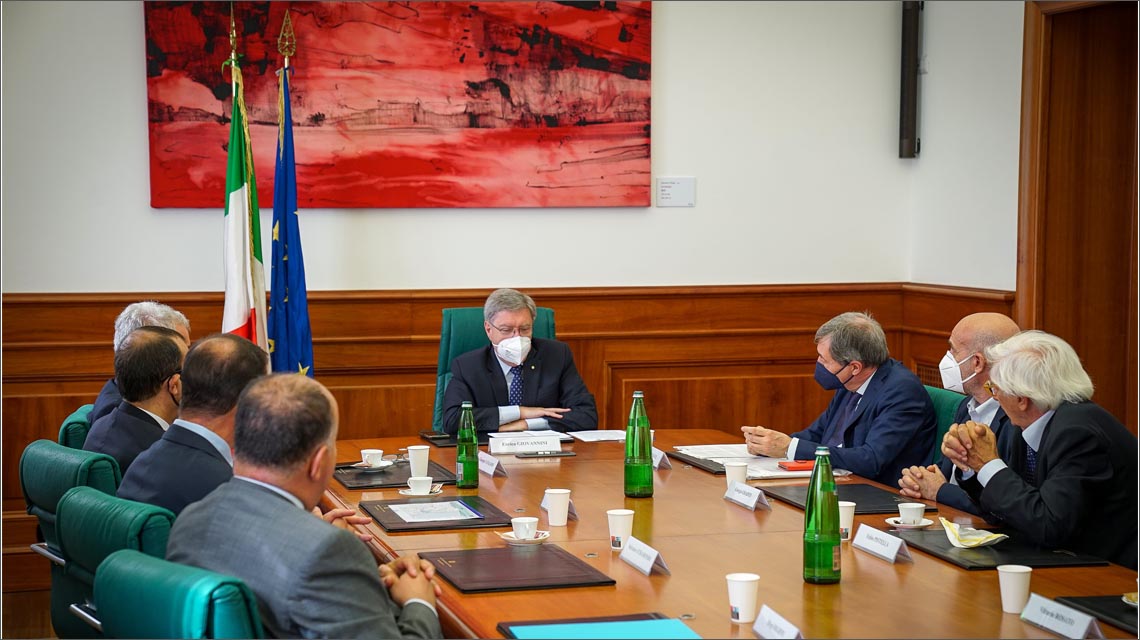Italian National Agency for New Technologies, Energy and Sustainable Economic Development

Transport: A new alliance in Italy to improve road and rail safety
Italy is to become the first European country with an integrated system to monitor critical infrastructures thanks to an agreement among ENEA, the National Institute of Geophysics and Volcanology (INGV) and the Ministry of Sustainable Infrastructures and Mobility (MIMS), as envisaged in the memorandum of understanding signed by the general manager for Digitization, Information and Statistical Systems of the MIMS, Mario Nobile, the president of ENEA Gilberto Dialuce and the president of the INGV Carlo Doglioni. The goal is to apply the most advanced technologies to enhance national roads and railways safety and ensure the continuity of infrastructures and transportation, mobility and logistics in case of fires and extreme natural events -such as earthquakes and floods- in line with the international program EISAC.it (European Infrastructure Simulation and Analysis Center), which is being implemented by ENEA and the INGV.
As part of the agreement with MIMS, ENEA and INGV will work closely with the ANAS and RFI and private operators under concession to raise knowledge and improve control of public works and road and rail networks, which could provide a unique wealth of information to infrastructure managers to prevent accidents and damage caused by wear and tear.
The Minister of Sustainable Infrastructures and Mobility Enrico Giovannini expressed satisfaction with the signing of the memorandum of understanding. “Innovation and digitization are valid allies to create an increasingly safe infrastructural system”, said the Minister. "In this case we are not considering just traditional infrastructures, but an actual info-structure that will allow, also through data - continued the Minister - to move forward on the path of resilience, not only with respect to extreme natural events, but with a view to climate change mitigation and adaptation, to which the Ministry has given considerable attention in recent months ”.
"This agreement will further strengthen the ongoing collaborations among the signatories of the protocol in a strategic area of action, starting with the transport system, in support of the energy transition. ENEA already develops models and systems for analyzing and monitoring critical infrastructures (electricity, water and gas, road and rail mobility, telecommunications) and systems and tools for the protection from natural events for emergency management and risk analysis. It also conducts analyses of infrastructure-territory dependencies and infrastructure interdependency and develops decision support systems, simulation models of adverse events, propagation of faults and effective countermeasures to reduce their impact and effectively manage crisis ”pointed out the President of ENEA, Gilberto Dialuce.
"The INGV institutional mandate includes assisting the government in monitoring natural hazards, particularly seismic, volcanic and tsunami ones. The quantification of the natural hazard in the areas where critical infrastructures are located and a 24-hour surveillance will help evaluate all the actions to be taken with ENEA and MIMS in the interest of public safety " said the INGV President, Carlo Doglioni.
One of the most significant sections of the memorandum of understanding provides support for the management and use of the National Registry of Public Works (AINOP) through the development of interactive digital infrastructure models with seismic, hydraulic, hydrogeological and meteorological data. The Registry will be at the core of the new security management system both as a 'recipient' of the information acquired on the works and as 'data supplier' to support monitoring and operational risk forecasting activities. In this context, ENEA will make available the CIPCast decision support platform, an advanced technological tool capable of providing 'integrated' risk forecasts, connecting information on mobility and transport infrastructures with that on electricity and telecommunications networks.
“It will be the first European Country with an integrated tool to monitor the risk of all the nation's critical infrastructures. Since the infrastructure system is at this stage totally interconnected, it has become necessary to set up protection measures “tailored” on the system rather than "vertical" measures, starting with the mobility system", said Professor Fabio Pistella, who will coordinate the activities conducted by ENEA and INGV to implement the Protocol and the program EISAC.it.

